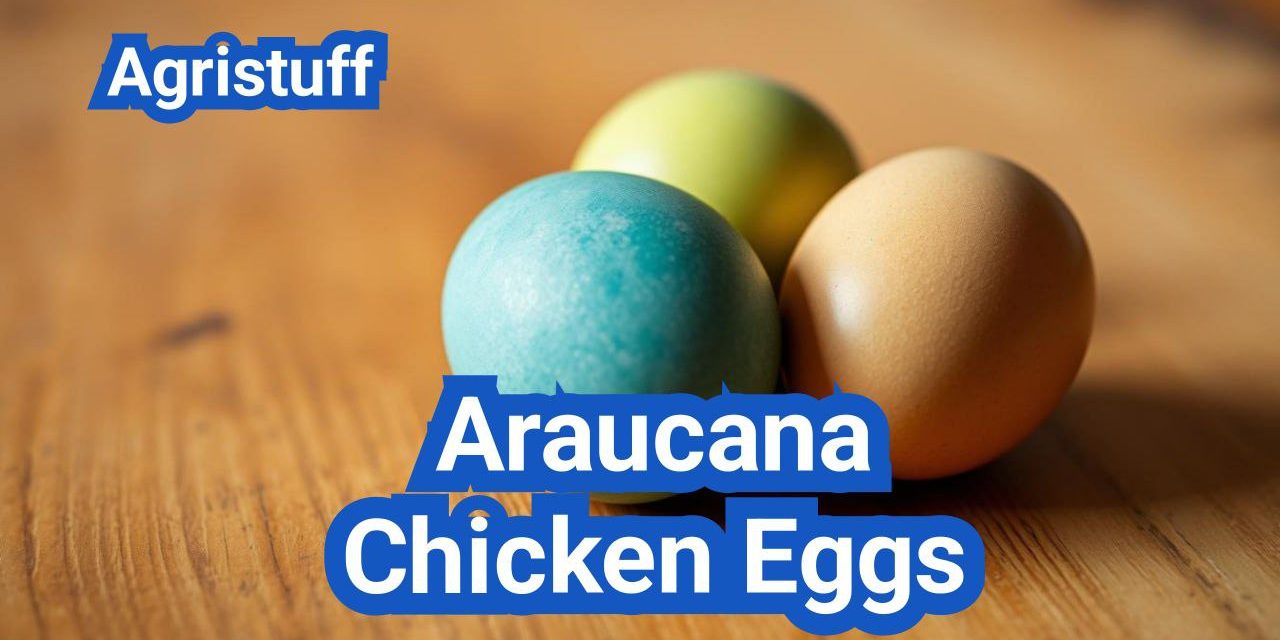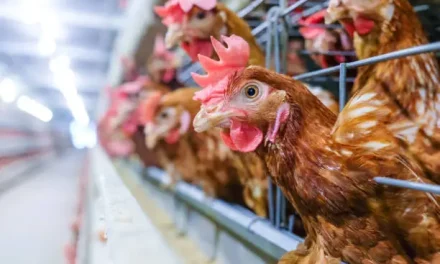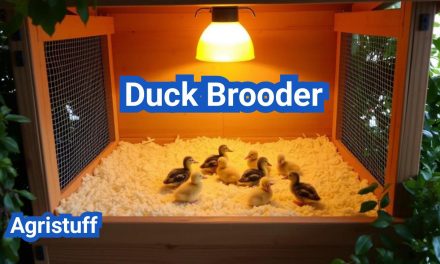Araucana chickens are renowned for their vibrantly colored eggs ( Araucana Chicken Eggs ), a result of a unique genetic trait. These birds are not only a delight to behold, but their eggs are also a nutritional treasure.
The blue eggs produced by Araucana hens are rich in nutrients and have a distinct taste. With proper care and nutrition, Araucana chickens can be a valuable addition to any backyard flock, providing a steady supply of eggs.
To maximize egg production, it’s essential to provide the right conditions, including adequate calcium-rich layer feed and proper lighting. By understanding the needs of these unique birds, backyard chicken keepers can enjoy a bountiful harvest of vibrant, nutritious eggs.
Key Takeaways
- Araucana chickens produce vibrantly colored eggs due to a genetic trait.
- Their eggs are rich in nutrients and have a distinct taste.
- Proper care and nutrition are essential for maximizing egg production.
- Adequate calcium-rich layer feed and proper lighting are crucial for laying hens.
- Araucana chickens can be a valuable addition to any backyard flock.
The Fascinating World of Araucana Chickens
The enchanting world of Araucana chickens is filled with fascinating history, unique physical traits, and of course, their famous blue eggs. Originating in South America, these chickens have captivated poultry enthusiasts with their distinctive features and vibrant egg-laying abilities.
Origin and History of the Araucana Breed
The Araucana breed has a rich and somewhat mysterious history. Believed to have originated in Chile, these chickens were first encountered by Europeans in the early 20th century. The breed is thought to have descended from the indigenous chickens of South America, which were known for their blue eggs and unique physical characteristics.
Key historical points about Araucana chickens include:
- First introduced to the United States in the 1930s
- Recognized by the American Poultry Association in 1976
- Bred for their unique genetic traits, including the ability to lay blue eggs
The Araucana breed has been developed over the years to emphasize its distinctive features, including ear tufts and a rumpless tail. Breeders have worked to maintain the integrity of these characteristics while ensuring the health and vitality of the chickens.
Distinctive Physical Characteristics | Araucana Chicken Eggs
Araucana chickens are known for several distinctive physical traits that set them apart from other breeds. Their most notable features include:
- Ear tufts: Feathers growing from the ear area, giving them a unique appearance
- Rumpless tail: The absence of a tail, which is a result of a genetic mutation
- Blue eggs: Their most famous trait, resulting from a genetic mutation that causes the eggshell pigment to be deposited throughout the shell
In addition to these features, Araucanas come in a variety of colors, including black, white, and various shades of gold and silver. Their unique appearance makes them a popular choice among poultry enthusiasts and backyard chicken keepers.
The combination of their fascinating history, unique physical characteristics, and ability to lay blue eggs makes Araucana chickens a truly special breed.
Araucana Chicken Eggs: Nature’s Blue Treasures

The blue eggs laid by Araucana chickens have captivated poultry enthusiasts and scientists alike. This unique characteristic is not just aesthetically pleasing but also rooted in fascinating science.
The Science Behind Blue Eggshells
The blue coloration of Araucana eggs is due to a pigment called biliverdin, which is deposited on the eggshell during its formation. Unlike other pigments that may cause external coloring, biliverdin integrates into the shell itself, giving the eggs their distinct blue hue.
Eggshell Biliverdin: Nature’s Blue Pigment
Biliverdin is a naturally occurring pigment that results from the breakdown of hemoglobin. In Araucana chickens, this pigment is secreted during the egg-laying process and becomes embedded in the eggshell, creating the blue color. This unique trait is a result of genetic factors that distinguish Araucana chickens from other breeds.
Egg Size and Appearance | Araucana Chicken Eggs
Araucana chicken eggs not only boast a striking blue color but also vary in size and appearance. Typically, these eggs are medium to large in size. The eggshell is sturdy, with a smooth texture that complements its vibrant blue color. Here are some key characteristics of Araucana eggs:
- Medium to large in size
- Vibrant blue color due to biliverdin
- Sturdy eggshell with a smooth texture
The combination of these characteristics makes Araucana eggs highly sought after by poultry enthusiasts and chefs alike.
Araucana Egg Production Facts
Araucana chickens are moderate egg layers, and their production rates are influenced by several factors. Understanding these factors is crucial for backyard poultry keepers who want to maximize their egg yield.
Egg Production Per Week
Araucana hens typically lay around 3 to 4 eggs per week. This rate can vary depending on the individual bird’s health, nutrition, and environmental conditions.
Annual Egg Production Rates
On average, Araucana chickens produce around 180 to 200 eggs per year. This makes them a reliable choice for those looking for a steady supply of eggs.
Factors Affecting Egg Laying
Several factors can influence the egg-laying ability of Araucana chickens. These include:
- Nutrition: A balanced diet rich in calcium and protein is essential for strong eggshell production.
- Lighting: Adequate lighting, especially during the winter months, can help maintain egg production.
- Health: Regular health checks can help identify any issues that may affect egg laying.
- Stress: Minimizing stress by providing a comfortable and safe environment can help maintain consistent egg production.
| Factor | Impact on Egg Laying |
|---|---|
| Nutrition | A balanced diet supports strong eggshell production and overall health. |
| Lighting | Adequate lighting helps regulate the bird’s reproductive cycle. |
| Health | Regular health checks can identify issues affecting egg production. |
| Stress | Minimizing stress helps maintain consistent egg laying. |
By understanding and managing these factors, backyard poultry keepers can optimize the egg production of their Araucana chickens.
Nutritional Profile and Taste

Araucana chicken eggs are not only a feast for the eyes but also offer a rich nutritional profile. While their blue shells make them stand out, the nutritional benefits they provide are just as impressive as their unique appearance.
Do Araucana Eggs Taste Different?
The taste of Araucana eggs is often described as rich and creamy, similar to other high-quality eggs. The unique blue or green shell doesn’t affect the taste; instead, factors like the hen’s diet and living conditions play a significant role. As one egg enthusiast noted, “The flavor profile of Araucana eggs is unbeatable, with a deep, rich taste that’s hard to find in commercial eggs.”
Araucana eggs are said to have a more vibrant yolk color due to the hens’ diverse diet, which can include foraging for insects and plants. This diverse diet contributes to the eggs’ overall flavor and nutritional profile.
Nutritional Benefits
Nutritional Benefits of Araucana Eggs
Araucana eggs are nutritionally similar to eggs from other breeds, providing an excellent source of protein, vitamins, and minerals. They contain essential nutrients like vitamin D, B12, and choline, making them a healthy addition to any diet.
- High-quality protein
- Rich in vitamins and minerals
- Good source of vitamin D and B12
According to a study on egg nutrition, “Eggs from heritage breeds like Araucanas often have more nutritional value due to the hens’ natural diet and living conditions.” Incorporating Araucana eggs into your diet can add variety and nutritional benefits to your meals.
In conclusion, Araucana eggs not only bring a unique visual appeal but also offer a rich taste and numerous nutritional benefits, making them a valuable addition to any meal.
Araucana Chicken Varieties and Colors
The Araucana breed is celebrated for its wide array of colors, from lavender to gold duckwing. This diversity in color makes Araucana chickens a fascinating addition to any backyard flock.
Standard Araucana Colors
Araucana chickens are recognized in several standard colors by poultry associations. These colors include black, white, and various shades of red and gold. The standard colors are a result of careful breeding practices that have been refined over years.
Standard Color Variations:
- Black Araucana
- White Araucana
- Red Araucana
- Gold Duckwing Araucana
Lavender Araucanas | Araucana Chicken Eggs
Lavender Araucanas are particularly prized for their soft, pastel lavender plumage. This unique coloration is a result of a specific genetic trait that dilutes the black pigment, creating the lavender hue.
The lavender color in Araucanas is not only visually appealing but also a testament to the breed’s genetic diversity.
White, Black, and Gold Duckwing Varieties
Araucanas also come in white, black, and gold duckwing varieties, each with its unique charm. The gold duckwing variety, for instance, features a beautiful golden hue on the hackles and saddle feathers, contrasting with the rest of the body.
| Variety | Description |
|---|---|
| White Araucana | Pure white plumage |
| Black Araucana | Glossy black feathers |
| Gold Duckwing Araucana | Golden hue on hackles and saddle feathers |
The diverse range of colors in Araucana chickens not only adds visual appeal to a flock but also reflects the breed’s rich genetic heritage.
Setting Up Your Coop for Araucana Chickens

A well-designed coop is essential for the well-being of your Araucana chickens and the success of your backyard egg production. The coop serves as a safe haven for your chickens, protecting them from predators and harsh weather conditions.
Space Requirements | Araucana Chicken Eggs
Araucana chickens need adequate space to move around comfortably within their coop. A general rule of thumb is to provide at least 3-4 square feet of space per chicken inside the coop. This allows them to stand up, turn around, and stretch their wings without feeling cramped.
Adequate space is crucial for reducing stress among your flock, which in turn can improve egg production. Overcrowding can lead to health issues and decreased egg laying.
Nesting Box Design | Araucana Chicken Eggs
Nesting boxes are a critical component of your coop, as they provide a safe and comfortable place for your hens to lay their eggs. For Araucana chickens, it’s recommended to have one nesting box per 3-4 hens. The boxes should be designed to be cozy and secure, encouraging your hens to lay eggs in a clean and safe environment.
The ideal nesting box should be about 12 inches wide, 12 inches deep, and 18 inches tall. Soft bedding such as straw or pine shavings should be used to line the boxes, making them comfortable for your hens.
Ventilation and Temperature Control | Araucana Chicken Eggs
Proper ventilation is vital for maintaining a healthy environment within the coop. Good airflow helps to remove moisture and ammonia from the chickens’ droppings, reducing the risk of respiratory problems. Ventilation can be achieved through windows, vents, or mesh panels.
Temperature control is also crucial, as extreme temperatures can stress your chickens and affect egg production. The coop should be well-insulated to maintain a stable temperature. In colder climates, consider adding a safe heating source, and in hotter climates, ensure there is adequate shading and ventilation to keep the coop cool.
By focusing on these key aspects of coop design, you can create a comfortable and safe home for your Araucana chickens, promoting their health and productivity.
Feeding for Maximum Egg Production
To maximize egg production in Araucana chickens, it’s crucial to focus on their dietary needs. A well-balanced diet is the foundation for healthy egg laying.
Layer Feed Essentials | Araucana Chicken Eggs
Araucana chickens require a high-quality layer feed that is rich in nutrients. This feed should contain the right mix of proteins, vitamins, and minerals to support egg production. “A good layer feed is like a multivitamin for your chickens,” says poultry expert, Dr. Jane Smith.
“It provides everything they need to stay healthy and productive.”
Calcium Requirements for Strong Shells
Calcium is a critical component for strong eggshells. Araucana chickens need adequate calcium to produce eggs with robust shells. Providing crushed oyster shells or dark leafy greens like kale can help meet their calcium needs. Ensuring sufficient calcium intake can reduce the risk of egg binding and other health issues.
Supplements and Treats | Araucana Chicken Eggs
While layer feed should be the main staple, supplements and treats can be given in moderation. Treats like fruits and vegetables can provide additional nutrients, but they should not exceed 10% of the chicken’s daily diet. Supplements like probiotics can support gut health, which is linked to overall egg production.
By focusing on a balanced diet that includes layer feed, adequate calcium, and judicious use of supplements and treats, you can support your Araucana chickens’ egg production and overall health.
Lighting Systems for Year-Round Laying

The right lighting system can significantly impact the egg production of your Araucana chickens, especially during winter months. Lighting plays a crucial role in regulating the laying cycle of hens, and understanding how to optimize it can help maintain consistent egg production throughout the year.
Setting Up a Lighting Schedule
To encourage consistent laying, it’s essential to establish a well-planned lighting schedule. Araucana chickens typically require 14-16 hours of light per day to maintain optimal egg production. This can be achieved by supplementing natural daylight with artificial lighting during the shorter winter days.
Key Considerations for a Lighting Schedule:
- Gradually introduce additional lighting to avoid stressing the hens.
- Maintain a consistent lighting schedule to regulate the hens’ internal clocks.
- Ensure the lighting is evenly distributed throughout the coop to prevent dark spots.
Seasonal Adjustments
As the days get shorter in winter, you’ll need to make seasonal adjustments to your lighting system. This involves increasing the duration of artificial lighting to compensate for the reduced natural daylight. Conversely, during the longer days of summer, you may need to adjust the lighting schedule to prevent over-stimulation.
Tips for Seasonal Adjustments:
- Monitor daylight hours and adjust your lighting schedule accordingly.
- Use timers to automate your lighting system and ensure consistency.
- Be prepared to make gradual adjustments to avoid disrupting the hens’ laying cycle.
Light Type and Intensity
The type and intensity of lighting can also impact egg production. LED lights are a popular choice for chicken coops due to their energy efficiency and durability. The intensity of the lighting should be sufficient to stimulate the hens without causing stress or discomfort.
| Light Type | Intensity (Lux) | Energy Efficiency |
|---|---|---|
| LED | 20-50 | High |
| Incandescent | 20-50 | Low |
| Fluorescent | 20-50 | Medium |
By understanding the importance of lighting systems and implementing a well-planned lighting schedule, you can help maintain consistent egg production from your Araucana chickens throughout the year.
Hatching Araucana Eggs Successfully

The process of hatching Araucana eggs is both an art and a science, demanding careful attention to detail. As a poultry enthusiast, understanding the intricacies of incubation and chick care is crucial for a successful hatching experience.
Incubation Requirements
Incubating Araucana eggs requires maintaining a consistent temperature of 99.5°F (37.5°C) and humidity levels between 50-60%. It’s essential to invest in a high-quality incubator that can maintain these conditions accurately.
“The key to successful incubation is consistency,” says poultry expert Jane Smith. “Fluctuations in temperature or humidity can significantly impact hatchability.”
- Ensure the incubator is in a draft-free area.
- Use a hygrometer to monitor humidity levels.
- Turn eggs 3-5 times daily to prevent the yolk from sticking to the shell.
Candling and Monitoring
Candling is a critical process that involves shining a light through the egg to monitor embryo development. This should be done on days 7 and 14 of incubation.
During candling, look for signs of development such as veins and movement. Eggs that are not developing should be removed from the incubator.
Caring for Araucana Chicks
Once the eggs have hatched, it’s crucial to provide the chicks with a safe and healthy environment. This includes a brooder with adequate ventilation, heat, and nutrition.
Araucana chicks require starter feed rich in protein to support their growth. Ensure access to fresh water at all times and monitor their health closely.
- Maintain a brooder temperature of 90°F (32°C) for the first few weeks.
- Gradually reduce the temperature as the chicks grow.
- Provide enough space to prevent overcrowding.
By following these guidelines, you can successfully hatch Araucana eggs and raise healthy, vibrant chicks.
Araucana vs. Similar Blue Egg Layers

The world of blue egg-laying chickens is diverse, with breeds like Araucana, Ameraucana, and Easter Egger captivating poultry enthusiasts. While these breeds share the trait of laying blue eggs, they have distinct differences that set them apart.
Ameraucana Chickens: Key Differences
Ameraucana chickens are often compared to Araucana due to their similar blue egg-laying ability. However, Ameraucana chickens are a distinct breed developed in the United States. Unlike Araucana, Ameraucana chickens have muffs and beards, and they come in a variety of colors. “Ameraucana chickens offer a more robust egg production compared to Araucana,” notes a poultry expert. Their egg-laying capacity and temperament make them a popular choice among backyard chicken keepers.
The primary differences between Araucana and Ameraucana chickens include:
- Presence of muffs and beards in Ameraucana
- Variety of colors available in Ameraucana
- Egg production rates
- Origin and breed history
Easter Egger Chickens Explained
Easter Egger chickens are another popular breed known for laying blue or green eggs. They are not a purebred breed but are often the result of crossing Ameraucana or Araucana with other breeds. Easter Eggers are prized for their colorful eggs and friendly disposition. “Easter Eggers bring a fun and unpredictable element to egg collecting,” says a seasoned poultry keeper.
Easter Egger chickens are characterized by their:
- Variable egg color, including blue, green, and sometimes pink
- Mixed heritage, often involving Ameraucana or Araucana
- Friendly and adaptable nature
Other Blue Egg Chicken Breeds
While Araucana, Ameraucana, and Easter Egger are the most well-known blue egg layers, other breeds also produce blue or blue-tinted eggs. These include:
- Crevecoeur: Known for their unique crest and blue eggs
- Lakenvelder: Some strains lay eggs with a blue tint
Each of these breeds brings its own unique characteristics to the table, offering a range of options for those interested in raising chickens that lay blue eggs.
Troubleshooting Egg Production Problems

Troubleshooting egg production problems in Araucana chickens involves identifying health issues and stress factors. Araucana chickens are known for their unique blue eggs, but like all chicken breeds, they can experience fluctuations in egg production.
Health Issues Affecting Egg Laying | Araucana Chicken Eggs
Several health issues can impact egg production in Araucana chickens. These include:
- Parasites: Mites, lice, and worms can cause discomfort and stress, leading to reduced egg laying.
- Diseases: Respiratory infections, reproductive tract infections, and other diseases can affect egg production.
- Nutritional deficiencies: Lack of essential nutrients like calcium, vitamin D, and protein can impact eggshell quality and production.
Regular health checks and maintaining a clean coop are crucial in preventing these issues.
Stress Factors
Stress is a significant factor that can affect egg production in Araucana chickens. Common stressors include:
- Environmental changes: Changes in temperature, humidity, or coop layout can cause stress.
- Predator threats: Presence of predators can stress chickens, reducing egg production.
- Social dynamics: Introducing new chickens or changes in the flock’s social hierarchy can cause stress.
Minimizing stress by maintaining a stable environment and ensuring adequate space can help maintain egg production.
Solutions for Common Egg Problems
Addressing egg production problems requires a multi-faceted approach. Here are some solutions:
| Problem | Solution |
|---|---|
| Low egg production | Ensure adequate nutrition, check for health issues, and minimize stress. |
| Poor eggshell quality | Provide additional calcium supplements and ensure proper vitamin D levels. |
| Soft or thin-shelled eggs | Check for nutritional deficiencies, especially calcium, and consider adding crushed oyster shells to their feed. |
By addressing health issues and stress factors, you can improve egg production in your Araucana flock.
Regular monitoring and adjustments to their environment and nutrition can help maintain optimal egg production. For more specific guidance on managing Araucana chickens, refer to the previous sections on feeding, coop setup, and health care.
Marketing and Selling Araucana Eggs

The distinct blue hue of Araucana eggs presents a lucrative opportunity for farmers to tap into premium markets. As a unique product, these eggs can command a higher price due to their aesthetic appeal and the perceived value among consumers seeking specialty or heritage products.
Pricing Strategies | Araucana Chicken Eggs
Determining the right price for Araucana eggs involves considering several factors, including production costs, market demand, and competition. A competitive pricing strategy is crucial to attract customers while ensuring profitability. Farmers should research what similar farms are charging for their specialty eggs to position their product competitively.
According to industry experts, “Pricing specialty eggs requires a deep understanding of your target market’s willingness to pay a premium for unique products.” This insight underscores the importance of market research in setting prices that balance profitability with customer affordability.
Packaging for Premium Appeal | Araucana Chicken Eggs
The packaging of Araucana eggs can significantly enhance their market appeal. Using eco-friendly packaging materials and designs that highlight the eggs’ unique blue color can make the product stand out. Attractive packaging not only protects the eggs but also communicates the premium quality of the product.
- Use sturdy, eco-friendly materials to protect the eggs and appeal to environmentally conscious consumers.
- Design packaging that showcases the blue color of the eggs, potentially with transparent windows or blue-themed designs.
- Include information about the Araucana breed and the benefits of their eggs to educate consumers and add value.
Finding Your Market | Araucana Chicken Eggs
Identifying the right market is critical for the successful sale of Araucana eggs. Potential markets include high-end grocery stores, farmers’ markets, and direct-to-consumer sales through online platforms or farm stands. Understanding the preferences and buying habits of your target market is essential for developing effective marketing strategies.
As noted by a successful egg farmer, “Understanding your customer’s needs and preferences is key to selling specialty products like Araucana eggs.” This emphasizes the importance of customer engagement and feedback in tailoring marketing efforts.
Egg Safety and Storage Guidelines

Maintaining the safety and quality of Araucana eggs involves several key practices. Ensuring these eggs are handled correctly from collection to storage is crucial for consumer health and satisfaction.
Proper Collection and Cleaning | Araucana Chicken Eggs
The first step in maintaining egg safety is proper collection. Eggs should be collected frequently to prevent them from getting dirty or damaged. When collecting, it’s essential to handle eggs gently to avoid cracking. Cleaning should be done carefully; if eggs are dirty, they can be gently wiped with a dry cloth. However, washing eggs is generally not recommended as it can remove the natural protective coating on the eggshell.
Storage Recommendations | Araucana Chicken Eggs
Once collected and cleaned, eggs should be stored properly. The ideal storage temperature for eggs is between 40°F and 45°F, with a relative humidity of 70-80%. Refrigeration is key to maintaining egg freshness. Eggs should be stored with the large end facing upwards to keep the yolk centered.
USA Egg Safety Regulations | Araucana Chicken Eggs
In the United States, egg safety is regulated by various guidelines to ensure consumer safety. The USDA’s Egg Safety Rule requires that eggs be stored in refrigerated conditions and that producers follow strict guidelines for cleaning and handling eggs. Understanding and adhering to these regulations is crucial for producers and consumers alike.
By following these guidelines for egg safety and storage, consumers can enjoy their Araucana eggs while maintaining their quality and safety.
Starting Your Araucana Flock
Starting an Araucana flock requires careful planning and research to ensure a healthy and productive experience. This involves several key steps, from finding reputable breeders to setting up the right infrastructure.
Finding Reputable Araucana Breeders
When looking for Araucana breeders, it’s essential to find ones who are reputable and have a history of raising healthy birds. Here are some tips:
- Research online reviews and testimonials from other customers.
- Ask for health guarantees and vaccination records.
- Check if the breeder is registered with a national poultry association.
What to Look for When Buying Chicks
Buying Araucana chicks can be an exciting experience, but it’s crucial to know what to look for. Key factors include:
- Health: Look for active, alert chicks with no signs of illness.
- Breed Characteristics: Ensure the chicks exhibit the distinctive features of Araucana chickens.
Initial Setup Costs
The initial setup costs for an Araucana flock can vary depending on several factors, including the size of your coop and the number of chickens. Here are some expenses to consider:
- Coop construction or purchase
- Feeding and watering equipment
- Initial stock of feed and supplements
- Fencing for secure enclosure
By carefully planning and executing these steps, you can enjoy a thriving Araucana flock that provides beautiful blue eggs for years to come.
The Joy of Araucana Chicken Eggs
Raising Araucana chickens can be a truly rewarding experience, especially for those who enjoy backyard egg production. The unique blue eggs laid by these chickens not only add a touch of excitement to your daily breakfast but also provide a nutritious and delicious addition to your family’s diet.
The joy of raising chickens like Araucanas lies in their ability to bring people together, whether it’s through the shared experience of caring for them or the delight of enjoying their eggs. With proper care and attention, Araucana chickens can thrive and become a beloved part of your family’s backyard egg production endeavors.
As you’ve learned throughout this article, Araucana chicken eggs are not just a novelty; they represent a connection to a rich history and a sustainable way of living. By embracing the world of Araucana chickens, you’re not only gaining a fresh source of nutritious eggs but also becoming part of a community that values the simple joys of raising these remarkable birds.
FAQ
What is an Araucana chicken?
The Araucana is a breed of chicken known for its unique blue eggs and distinctive physical characteristics, such as being rumpless and having tufts of feathers on its head.
What color eggs do Araucana chickens lay?
Araucana chickens are renowned for laying blue eggs, a trait that is highly prized by many backyard chicken keepers and poultry enthusiasts.
How many eggs per year do Araucana chickens lay?
On average, Araucana chickens lay around 180 to 200 eggs per year, although this can vary based on factors such as diet, health, and lighting.
Are Araucana eggs nutritious?
Yes, Araucana eggs are considered nutritious, offering a good source of protein, vitamins, and minerals. Their nutritional profile is similar to that of eggs from other chicken breeds.
Do Araucana eggs taste different?
The taste of Araucana eggs is generally considered to be similar to that of eggs from other breeds. However, some people believe that the unique conditions under which Araucanas are raised can impart a slightly different flavor.
What are the different varieties of Araucana chickens?
Araucana chickens come in several varieties, including standard, lavender, white, black, and gold duckwing. Each variety has its unique characteristics and appeal.
How do I care for Araucana chickens?
Caring for Araucana chickens involves providing a suitable coop with adequate space, ventilation, and nesting boxes, as well as a balanced diet that includes layer feed and calcium supplements.
What is the difference between Ameraucana and Araucana chickens?
Ameraucana and Araucana chickens are both known for laying blue eggs, but they are distinct breeds. Ameraucanas are generally considered to be more robust and have a more varied egg color, while Araucanas are known for their unique physical characteristics.
How can I encourage my Araucana chickens to lay more eggs?
To encourage higher egg production, ensure your Araucana chickens receive adequate lighting, a balanced diet, and are kept in a stress-free environment.
Are Araucana chickens good for beginners?
Araucana chickens can be a good choice for beginners who are willing to invest time in understanding their specific needs and characteristics. They require proper care and attention to thrive.
How do I store Araucana eggs safely?
To store Araucana eggs safely, collect them regularly, clean them gently if necessary, and store them in a cool, dry place, typically in the refrigerator, to maintain freshness and safety.
Can I hatch Araucana eggs at home?
Yes, you can hatch Araucana eggs at home using an incubator. It’s essential to follow proper incubation procedures and care for the chicks once they hatch.
Where can I buy Araucana chickens or eggs?
You can find Araucana chickens or eggs through reputable breeders, poultry farms, or online marketplaces. Ensure you research the seller to guarantee you’re getting healthy birds or fertile eggs.
Conclusion of: Araucana Chicken Eggs
What Makes Araucana Chicken Eggs Special?
Araucana Chicken Eggs are famous for their striking blue-to-blue-green shells, a signature that instantly sets them apart in any backyard or farmstand dozen. Beyond color, Araucana hens are a heritage exhibition breed with a devoted following in the U.S., valued for consistent laying, distinctive looks, and the genetic quirk behind their eggs’ hue. If you’re choosing breeds for a U.S. audience that loves variety and visual appeal, Araucana Chicken Eggs deliver both character and reliability in a compact package. Araucana breed profile – The Livestock Conservancy
The Genetics Behind the Blue Color of Araucana Chicken Eggs
The hallmark blue of Araucana Chicken Eggs is caused by an insertion near the SLCO1B3 gene that ramps up biliverdin transport in the shell gland. This endogenous retroviral insertion (EAV-HP) drives pigment into the eggshell during formation, so the blue tint isn’t a surface stain—it’s built into the shell itself. This is why Araucana Chicken Eggs appear blue both outside and on the shell’s inner surface when cracked. PLoS Genetics: EAV-HP insertion → blue eggshell
Which Pigments Color Araucana Chicken Eggs?
Araucana Chicken Eggs are colored primarily by biliverdin (blue-green) with possible traces of protoporphyrin IX (brown-reddish). Across birds, eggshell color arises from combinations of these heme-derived pigments, deposited late in shell formation. The science is clear: pigment chemistry—not feed dyes—explains the hues you see in Araucana Chicken Eggs. Review: Protoporphyrin IX & biliverdin in eggshells
Why the Blue Looks “Built In” on Araucana Chicken Eggs
Compared with brown layers, where protoporphyrin concentrates near the shell’s outer layers, the biliverdin linked with Araucana Chicken Eggs permeates the shell matrix during calcification. That’s why blue coloration shows on the inside of Araucana shells, while brown eggs can lose surface intensity with age, stress, or disease. Eggshell color mechanisms in layers
How to Identify True Araucana—For Authentic Araucana Chicken Eggs
In the U.S., true Araucanas are rumpless (no tailbone) and possess distinctive ear tufts; these traits are part of the show standard that underlies the reliably blue Araucana Chicken Eggs you’re seeking. When buying chicks or hatching eggs, confirm the breeder’s stock aligns with standard characteristics to avoid mislabeled birds. Araucana Club of America – Standard guidelines
The Ear Tuft Gene & Breeding Realities of Araucana Chicken Eggs
The ear-tuft trait associated with Araucana Chicken Eggs is an autosomal dominant with reduced penetrance—and the homozygous state is lethal. Responsible breeders pair birds thoughtfully to balance type with hatchability, which helps ensure future generations continue producing authentic Araucana Chicken Eggs. Somes (1981): Ear-tuftedness lethality
Araucana vs. Ameraucana vs. Easter Egger (Know Before You Buy)
Ameraucanas (bearded, muffed, tailed) are a distinct APA-recognized breed developed from Araucanas; Easter Eggers are mixed-heritage birds that may lay blue, green, or brown. To reliably get blue Araucana Chicken Eggs, purchase from breeders who maintain variety standards and provide parentage documentation. Ameraucana Breeders Club – Breed info
How Many Araucana Chicken Eggs Can You Expect Per Year?
Well-kept Araucana hens can be proficient layers, with good lines producing up to ~250 Araucana Chicken Eggs per year. Because they are often bred for exhibition, performance varies by flock; select breeders who also prioritize productivity if your goal is a colorful yet steady egg basket. Livestock Conservancy 2025 CPL note on Araucanas
When Do Araucana Hens Start Laying Araucana Chicken Eggs?
In small flocks, pullets typically begin producing Araucana Chicken Eggs around 18–24 weeks of age, with peak production in the first two years. Expect seasonal dips during molt and short-day months unless you manage light. UF/IFAS: Backyard egg production basics
Light Management to Keep Araucana Chicken Eggs Coming
Hens require adequate day length to maintain lay. Provide 12–14+ hours of light daily through winter to sustain Araucana Chicken Eggs, using a simple timer and safe fixtures to extend day length. University of Minnesota Extension: Light & egg production
Nutrition 101: Build Strong Shells on Araucana Chicken Eggs
Layer rations balanced for energy and amino acids plus ample minerals are essential for quality Araucana Chicken Eggs. Most hens need roughly 4–5 g of dietary calcium daily (with vitamin D₃ and phosphorus in balance). Offer a quality 16–18% protein layer feed and free-choice coarse calcium (e.g., oyster shell). Alabama Extension: Feeding the laying hen
What’s Inside the Shell of Araucana Chicken Eggs?
About 95% of a typical eggshell is calcium carbonate, with ~2.2 g of calcium per shell—so diet matters to maintain shell strength on Araucana Chicken Eggs. Trace minerals and a resilient organic matrix also influence shell quality and resistance to cracks. UF/IFAS: Concepts of eggshell quality
Health & Stress: Why Araucana Chicken Eggs Occasionally Look Different
Illnesses like infectious bronchitis can temporarily reduce output and alter shells (wrinkling, thinning, paler tones), affecting even Araucana Chicken Eggs. Minimize stress, vaccinate where appropriate, and maintain excellent biosecurity and nutrition to protect shell quality. Merck Vet Manual: Infectious bronchitis in layers
Are Araucana Chicken Eggs Healthier Than Other Colors?
No—shell color doesn’t determine nutrition. Araucana Chicken Eggs are nutritionally comparable to white or brown eggs; the hen’s diet and management influence fatty acids, vitamins, and freshness far more than shell color. USDA (Ask USDA): Shell color & nutrition
Safe Handling & Storage for Araucana Chicken Eggs
In the U.S., always refrigerate Araucana Chicken Eggs at ≤40°F (4°C), keep them in the original carton, and use within about three weeks for best quality. Wash policy and cold storage differ internationally, but U.S. FDA guidance is clear: keep eggs cold from farm to table. FDA: Egg safety & refrigeration
Buying Tips: Get the Real Thing for True Araucana Chicken Eggs
To ensure you’ll collect genuine Araucana Chicken Eggs (blue inside and out), work with reputable breeders who select for rumplessness, ear tufts, and blue eggs—and who can show lineage. Confirm show standards and varieties to avoid confusion with similarly named birds. American Poultry Association – Breeds & Standards
Improving Color Consistency in Araucana Chicken Eggs
While genetics set the base hue for Araucana Chicken Eggs, management preserves consistency: steady nutrition (especially minerals), low stress, disease control, and good lighting help maintain uniform appearance and quality across long laying cycles. Review: Factors influencing eggshell color
Final thought
For backyard keepers and small farms in the U.S., Araucana Chicken Eggs offer dependable production wrapped in a uniquely beautiful shell. Choose solid breeding stock, manage light and nutrition, and follow U.S. food-safety guidance to keep those sky-blue shells rolling into your cartons week after week. Learn more about Araucanas
Sources & References
- The Livestock Conservancy – Araucana Chicken
- The Livestock Conservancy – 2025 Conservation Priority List
- Araucana Club of America – Standard Guidelines
- Wang et al., 2013 – Blue eggshell SLCO1B3 mechanism (PLoS Genetics)
- Martínez et al., 2023 – Pigments & antioxidant aspects (Open-access review)
- Samiullah et al., 2019 – Brown eggshell pigments distribution (Review)
- Somes, 1981 – Ear-tuftedness lethal gene in Araucana
- Ameraucana Breeders Club – Breed overview
- UF/IFAS – Raising Backyard Chickens for Eggs
- University of Minnesota Extension – Raising chickens for eggs
- Alabama Extension – Feeding the Laying Hen
- UF/IFAS – Concepts of Eggshell Quality
- Merck Vet Manual – Infectious Bronchitis in Chickens
- USDA – Shell Color & Nutrients
- FDA – Egg Safety
- American Poultry Association – Breeds & Standards










